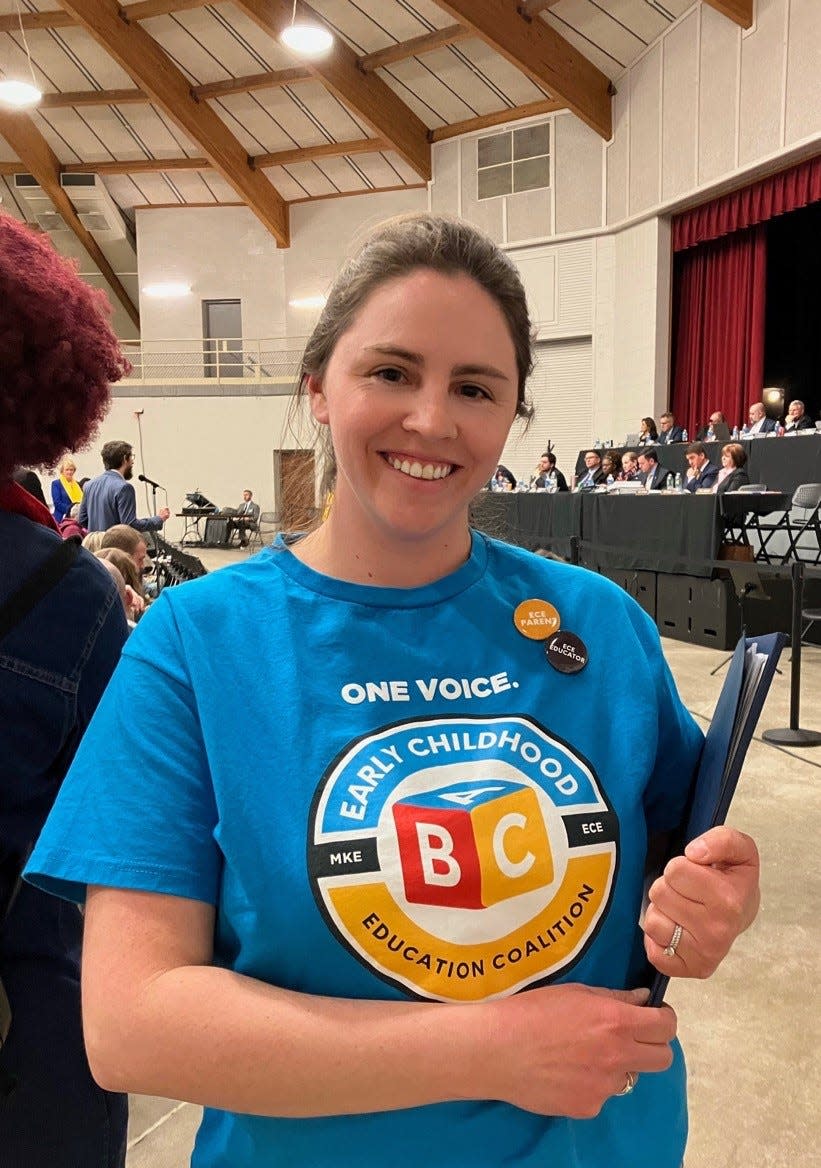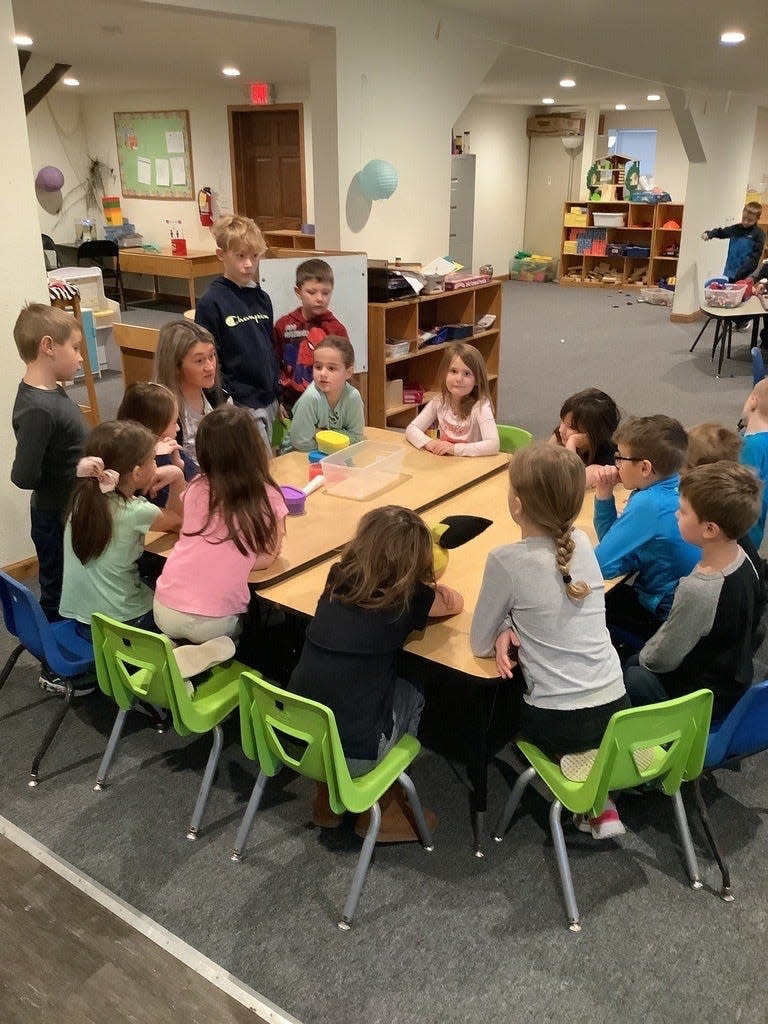Wisconsin child care is headed for meltdown. We all lose if daycare centers close doors.
Shared revenue, fiscal cliffs and creative vetoes grabbed most of the headlines from the state budget last summer.
Child Care Counts is a mild sounding program with a relatively modest $340 million budget in a state that was running a $7 billion surplus. What it supports, advocates say, is an industry no less important than other critical infrastructure: Wisconsin’s child care providers.
The program was created during COVID-19 to help keep early childhood education centers open. Post-pandemic, the patch work industry finds itself on the brink of a meltdown with major implications for the families it serves and the broader community, particularly the employers of parents who might have to make some difficult choices about caring for children, scaling back work hours or quitting jobs altogether.
The Ideas Lab invited experts, providers and parents to share perspectives as state lawmakers meet in a special session Sept. 20 to consider a plan by Gov. Tony Evers to provide $365 million to continue funding the program for two years.
Evers and Democrats tried on multiple occasions to include $340 million in permanent funding for the program in the state budget but Republican lawmakers included $15 million for other child care services instead.
We will be posting six op-eds over the next week, each offering different insights into the issue. This column is a free preview of those exclusive columns, available to subscribers. Our subscribers make projects like this possible. Not a subscriber? Please consider supporting local journalism by signing up today at jsonline.com/deal.
Businesses biggest losers from broken child care system, leaving billions on table
From Dean Gruner and Jon Stellmacher: ReadyNation, a group of business leaders who promote solutions that prepare children to succeed in education, work, and life, recently released a report that the child care crisis costs the United States $122 billion annually in lost productivity, wages, and revenue. Wisconsin alone loses an estimated $1.9 billion annually − and these figures just represent families with infants and toddlers.
As business leaders, we believe in common sense, evidence-based solutions that help our communities and our economy thrive. We see the steps that employers can take in helping solve this crisis: from getting involved in organizations like ReadyNation, to proactively advocating with legislators, to creating family-friendly policies and programs for their employees.
But, ultimately, it will require business leaders and legislators working together to ensure that our current workforce is productive and that future generations will be as well. We all know very well that the historic success of America’s economy has been built on the concept of investment in capital. Surely we should understand that human capital is the most valuable asset of our nation, of our state, and of every community.
We plead with our government leaders to seek common ground. We urge them to work together to find solutions that include more investment in our young, now, to maximize our long-term human capital, and to avoid making changes that could put our children and the people who care for them at risk.
Read the full column by Dean Gruner and Jon Stellmacher, two retired business executives: Child care crisis costs state $1.9 billion annually
Wait lists. High costs. Poor quality. I don't work because of broken child care system.
From Callie Colbo: Have you ever had to turn down an ideal career opportunity?
I was working in a Milwaukee school as a reading tutor when I became pregnant for the first time. I knew I’d need child care in order to work the following school year. My husband and I began researching providers. Parents we knew at the time were only using friends, family, and taking advantage of flexible work schedules to stitch together child care while they worked. I thought this was all out of choice and not necessity. However, I quickly found out that a lot of child care situations happen more by circumstance and less by choice.

I personally have the privilege of staying home with my children without fear for my economic stability because of my husband’s income, but many families in Milwaukee do not have that option. Parents are being forced to choose between low-rated care or no care at all. I shed tears as I sent the email declining to interview (for a dream job). Not just for me and my family, but also for my children’s peers, and countless families, experiencing stress from an early education system that needs more public support. Families deserve better.
It’s disappointing to be out of Milwaukee's workforce because I could not find high-quality, affordable child care in a timely manner to accept a job. The impact is far greater than many people realize, and I hope my story can shed light on how these issues in our child care system create family and financial stress for so many.
Read the full column by Callie Colbo, a stay-at-home mom and child care ambassador, here: I passed on my dream job. Child care would cost twice as much as mortgage payment
Child care is collapsing. We'll all lose if more Wisconsin centers close doors
From Vincent Lyles: Early childhood education – often referred to as child care – is the system of care and education of young children. It’s far more than babysitting. Since the vast majority of brain development happens before 3, this is a critical time for kids.
Created during the pandemic to allocate federal relief funds, the state’s Child Care Counts program represents a significant public investment into early childhood education. In Milwaukee, over 1,600 providers have received more than $117 million in aid. The program is aimed at helping centers recruit and retain staff, improve program quality and reduce costs for families.

The federal funds will run out in January 2024 and, without state investment, the program will end. If this happens, providers across the state will have to raise rates for families and cut wages for staff, while others will be forced to close altogether. This will make it even harder for families to access quality, affordable early childhood education.
Read the full column by Vincent Lyles, executive director of Milwaukee Succeeds, here: Child care can cost as much as college. Why are so many centers in danger of closing?
More stories on child care funding from the Ideas Lab archive
Without state support, families will face higher fees, fewer choices for child care
Child care can cost as much as college. What can be done to fix broken early education system
More than half of Wisconsinites live in child care desert, system in desperate need of help
More than 267,000 children in Wisconsin can't get access to an afterschool program
Contact Jim Fitzhenry at (920) 993-7154 or jfitzhen@gannett.com. Follow on Twitter at @JimFitzhenry, Instagram at @jimfitzhenry or LinkedIn.
This article originally appeared on Milwaukee Journal Sentinel: Wisconsin daycare centers struggle to stay open as state funds dwindle

